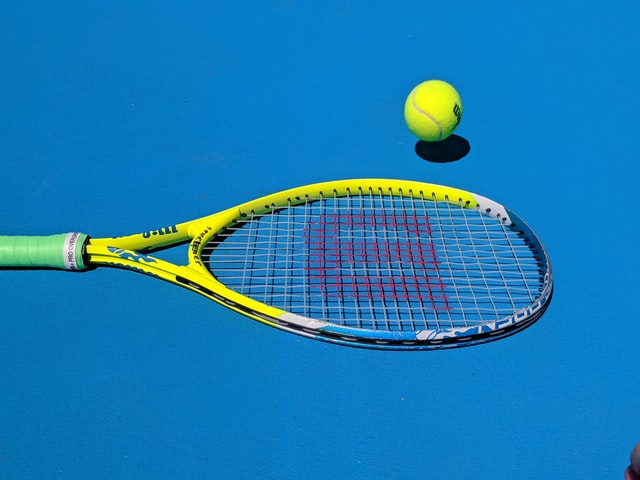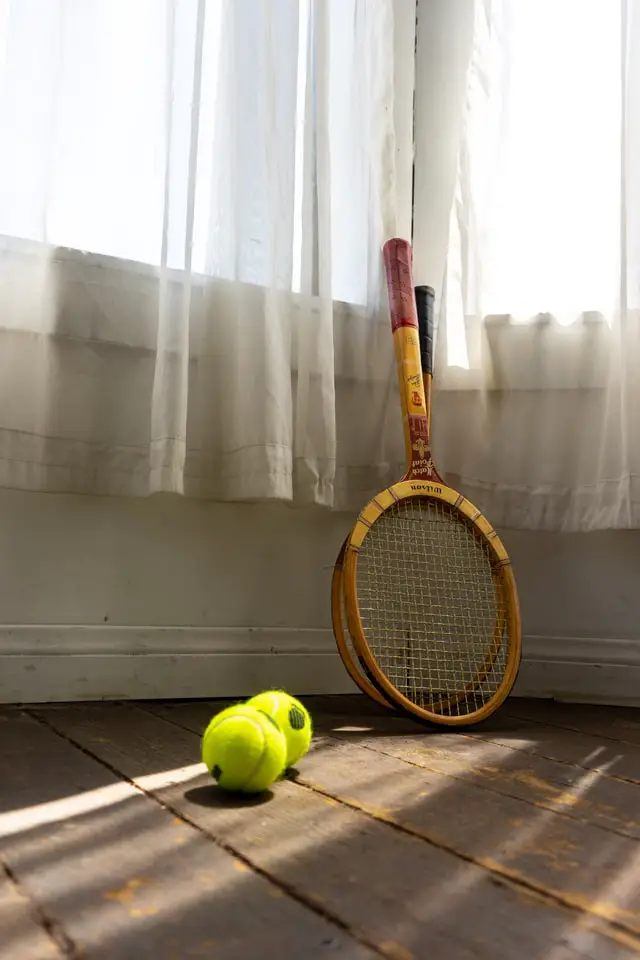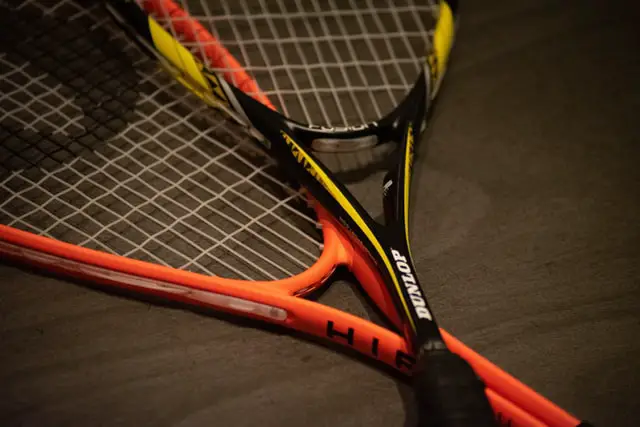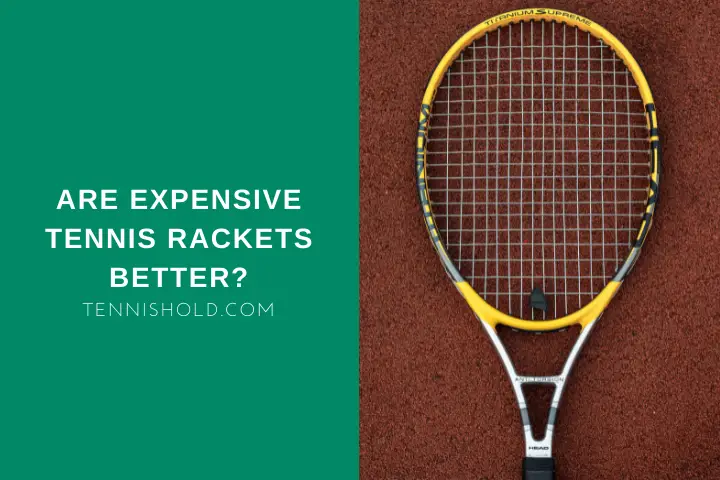The number of rackets available today is greater than ever before. As the range has gotten wider, so has the pricing.
At the time of writing, the cheapest racket I have found was $14.75. The most expensive comes in at $289.95.
This means that the cheapest racket costs just 5% of the price of the most expensive.
Expensive rackets are regarded as better than cheap models. They are made with better quality materials that increase the lifespan of the racket and provide a better in-game feeling. Expensive rackets will also have more defined specifications.
Of course, you cannot measure on price alone, but it is a pretty good indicator when there is over $200 difference.
In this article I will be covering:
- The most important differences between cheap and expensive tennis rackets
- The materials used in cheap tennis rackets
- The effect expensive rackets have on your technique
Further, I will share some of the key factors you need to consider when comparing cheap and expensive rackets.
I hope you stick around.
What Are The Key Differences Between Cheap And Expensive Tennis Rackets?

You can customize the strings. I don’t think I would even want to try to restring a $30 racket. The strings and restringing fee would be almost the value of it. You can make the strings, weights, and grips exactly how you like with a nicer racket.
Your hand-sweat will make your racket deflect on each shot if you don’t get a decent grip which will also play an important part of expensive rackets.
For this section, I will be using two example rackets from different ends of the pricing scale.
The cheap racket I have chosen to reference is the Wilson Ultra Power XL 112 (Amazon). On the expensive side it is my own racket, the Wilson Blade v7 98 (Amazon).
The first giveaway difference is in the name. The 98 and 112 after the racket model indicates the head size. The Ultra has a head size of 112 sq in, substantially more than the Blade.
The cheap racket has a larger head because it is aimed towards a broader market of less experienced players. Beginners lack the accuracy that more advanced players have and thus look for rackets with a larger sweet spot.
You may be wondering why higher-level players would want a smaller head size. In another article, I discuss the trade-offs when selecting a racket. Have a look if you haven’t already, as it links very closely into this section.
Age plays another role. Many of the cheaper rackets you see at around $100 today were trending at almost $200 a few years ago. As distributors are keen to sell more of the newer models, they can knock down the price on older products.
If you come across a model from a couple of years ago priced down significantly, it could be a good deal. The specifications between a model from 2019 and 2021 will be, in most cases, very similar.
The only technical difference between the V6 and the Blade v7 is the unstrung balance and the weight. The v7’s unstrung weight is only 1 gram more than the v6.
Unstrung balance refers to the distribution of weight on a racket.
If you want to have a look at the previous Blade model check it out – Wilson Blade 98 V6 (Amazon).
Material is also a factor when the very cheap rackets are compared. The Ultra Power XL is made of what Wilson calls AirLite Alloy.
This doesn’t give us much information as alloy just refers to a combination of metals. AirLite alloy doesn’t tell us what metals are used.
The description for the Blade V7, on the other hand, is much clearer. It states that it is made with Braided Graphite and Basalt composition.
Graphite is a robust and lightweight material used in almost all high-quality tennis rackets.
As you develop as a player, you will begin to hit harder. As you hit harder, the strings will degrade faster and eventually break. If your racket costs $30 and the strings are the same price, it is not economical to restring. You would be better off buying a new model.
The final consideration is grip size. As you will see, the cheap Wilson Ultra makes no reference to grip size.
The Blade, however, includes the grip size within the purchasing options. This is another example of customization you get with more expensive rackets.
The standard grips that come with the expensive rackets are usually better quality. If you have a cheap racket this can be overcome by purchasing a better quality over grip. My favourite over grip is Yonex Supergrap (Amazon).
What Materials Are Used In Cheap Tennis Rackets?

Cheaper rackets will use alloys, while higher-end rackets use materials like graphite, titanium, and carbon fiber. Talk about it.
As we learned in our comparison, the Ultra uses AirLite Alloy. It doesn’t specify what metals are used. It only says that they are an alloy mix using presumably lightweight materials.
Materials commonly used in alloys are:
- Zinc
- Copper
- Magnesium
- Chromium
Zinc usually makes up around 10% of tennis racket alloys. Zinc is used in so many alloys because of its anti-corrosion components.
It is unlikely that your racket will be getting wet enough to be affected by corrosion. However, if you keep your racket in the shed and there is a large leak, it might give some protection.
Aluminum is also a popular choice in cheaper rackets. It is lightweight, has reasonable shock absorption, and is cheaper than graphite. This allows the manufacturers to keep prices low while meeting the basic requirements.
Titanium also plays a part in many rackets on the market. In cheaper rackets, a popular method for getting an ideal balance is to blend graphite and titanium. As the rackets go up in price, they will see one of the two materials making up a larger proportion.
Almost all higher end rackets will use graphite or a similar carbon fibre material. The reason for this is because graphite is both lightweight and extremely strong. Two of the most important qualities we look for in tennis rackets.
Will Expensive Racket Improve Your Technique?

I’m sorry to break it to you but buying Federer’s Pro Staff (Amazon) is not going to make you play like him. It might even make the game harder for you depending on what level you are at.
When rackets are marketed, they are aimed at a specific group of players. These might be beginners or advanced players. It could be baseliners or net players, for example.
With a head size of 97 sq in an unstrung weight of over 340g, this Pro Staff is definitely not aimed at a new beginner.
Wilson makes no secret about this. On their website, they have a statement that makes very clear who the racket is intended for.
The Pro Staff range is aimed at experienced players looking for a racket that delivers the pinnacle of precision and performance.
The heavyweight will make it harder to swing, and the smaller head size will decrease the sweet spot.
So, the good news is you don’t need to shell out for Federer’s state-of-the-art model to improve. This is especially true if you’re a beginner or improver.
Ignoring the specs and looking just at the material, you will notice a difference in feel. This can help your technique as you will feel more comfortable.
When hitting with a very cheap racket, you will experience more impact on your arm as you strike the ball. When hitting with a graphite racket, it will give a much crisper feeling as you contact the ball.
As I mentioned earlier, you can get an earlier version of a current model with virtually the same characteristics. For most developing players, this is a good way to go about buying rackets.
Final Words
It’s clear that while expensive rackets are made of better-quality materials, the price is not always the best indicator.
A beginner does not need to purchase the latest racket endorsed by Nadal. However, they may also want to steer away from the very cheap $20 ones if they are serious about tennis.
In contrast to the advice I have given in this article, the first racket I bought was Djokovic’s Head Speed Pro.
I was naive and thought it must be good enough for me if it is good enough for world number 1.
What was the first racket you bought and how much did it cost you? Was it worth it?

